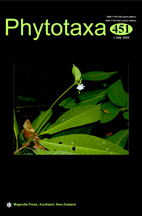Abstract
Wilsonosiphonia is a newly described marine algal genus with three species. The genus was previously confused with the widely distributed taxon Polysiphonia, and because of this, the taxonomy and distribution of Wilsonosiphonia is likely underestimated. We report the discovery of a minute filamentous red alga, Wilsonosiphonia fujiae (Rhodophyta) in the Maldives Islands, a taxon which was considered endemic to Brazil. Specimens were collected at Fulhadoo, Goidhoo Atoll and Dhidhdhoo Islands, South Ari Atoll, which are ca. 160 km apart, during January and July, 2019, respectively. Thalli formed dense patches on the upper intertidal in regions of shaded rock. Both mitochondrial cox1 and plastid rbcL sequencing confirmed the occurrence of W. fujiae in the Maldives, which is also in agreement with morphological observations. Based on the low pairwise divergences of COI-5P and rbcL sequences between the Maldives and Brazil specimens, we suggest that W. fujiae is a recently introduced yet cryptogenic species in the Maldives. Additionally, as a result of our phylogenetic analyses, it became evident that sequences from the Hawaiian Islands, which were listed as members of the genus Polysiphonia, represent species-level diversity within the genus Wilsonosiphonia. Based on both morphological characteristics and the COI-5P phylogeny, we here reinstate Polysiphonia rhizoidea from Hawaiʻi and transfer it to Wilsonosiphonia, as W. rhizoidea comb. nov.

